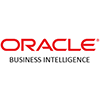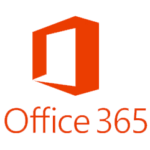Is your manual access provisioning and deprovisioning error-prone? Solved!
Access provisioning and de-provisioning is the process of granting or revoking access to a system, application, or data based on an individual’s role or need. In the current age of increasing use of robotic process automation (RPA), RPA bots also require access provisioning and de-provisioning to do their jobs. RPA bots often require privileged access to perform automated tasks. Further, given that each bot performs several different roles for various automation jobs to fully utilize the licence investment, speedy provisioning and de-provisioning becomes key to success.
Effective and efficient access provisioning and de-provisioning are critical to an organization’s security posture and a key component of regulatory compliance requirements. They are necessary for compliance with regulatory requirements, such as HIPAA (Health Insurance Portability and Accountability Act), PCI DSS (Payment Card Data Security Standard), and GDPR (General Data Protection Regulation). These regulations require organizations to implement access controls and demonstrate that they manage User access rights effectively.
Access provisioning and de-provisioning are critical for maintaining the confidentiality, integrity, and availability of an organization’s sensitive information and meeting regulatory requirements. However, several common errors can occur during manual access provisioning and de-provisioning. Manual errors, tendency to copy access from one individual to grant to another, not fully understanding what changes need to be made during departmental transfers, failure to revoke all possessed access in time are a few of the biggest barriers to successful access provisioning and de-provisioning. Failure to remove access or granting excessive access can increase the risk of data breaches and regulatory non-compliance. To prevent potential insider threats, it is also vital for organizations to be able to quickly remove access when it is no longer needed, such as when an employee leaves the company or when an RPA bot’s privileges are not modified between different automation jobs. It is important for organizations to not only carefully plan and implement access provisioning and de-provisioning processes, taking into account security, compliance, and operational considerations but also critical to regularly review and update these processes as needed to align with evolving business requirements and access management technology development.
The consequences of errors indicated above can be significant, leading to data breaches, financial losses, and damage to an organization’s reputation. Failure to remove access can result in potential insider threats, such as theft or sabotage, while granting excessive access can result in regulatory non-compliance and potential fines or legal action. There are also challenges associated with manual access provisioning and de-provisioning in that manual access provisioning and de-provisioning can be time-consuming, particularly for large organizations with many employees and systems. Consequently, when there are bandwidth issues, certain tasks, especially revoking access for terminated employees may miss to be done. Manual access provisioning and de-provisioning can be a complex process that involves multiple departments and systems. Complexity can make it difficult to see who has access to what systems and data, increasing the risk of unauthorized access. Inconsistent methods for granting access can make it difficult to manage access rights effectively. Inconsistency can result in discrepancies in access levels for the similar roles or users, increasing the risk of data breaches and regulatory non-compliance. As organizations grow and evolve, manual access provisioning and de-provisioning can become more challenging to scale effectively, leading to inefficiencies and an increased risk of errors.
If your organization already use robotic process automation (RPA), then you know the strengths of using automation. While bots and scripts can improve security by reducing human errors, it is crucial to implement appropriate security measures for their management. Organizations should ensure robust authentication and access controls over their bots and scripts, as well as their clients and workforce, to mitigate potential security threats and unauthorized actions.
Automation tools can streamline the access provisioning and de-provisioning process, reducing the risk of errors and saving time. These tools can automate the creation of User accounts, assignment of permissions, and removal of access when a User leaves the organization. Automation provides visibility, enables organizations to certify, monitor and audit access to systems and data, and detect any unauthorized access or unusual activity.
There are several choices of tools and technologies that an organization can use to automate access provisioning and de-provisioning. Workflow automation tools help by creating automated processes that create, modify, and remove User accounts and access rights. Identity and Access Management (IAM) solutions can automate User account creation, permission assignment, and access removal when a User leaves the organization. Automation delivers a number of benefits including:
Improved efficiency: Automation tools can reduce the time and effort required to manage access rights, allowing IT staff to focus on other critical tasks.
Reduced risk of errors: Automation tools can help reduce the risk of errors associated with manual access provisioning and de-provisioning, ensuring that access is granted and removed accurately, consistently and promptly.
Increased security: Automation tools can help improve security by ensuring that the right level of access is granted only to authorized personnel and that access is removed promptly when a User leaves the organization.
Enhanced compliance: Automation tools can help ensure compliance with regulatory requirements by providing audit trails and reports demonstrating that access rights are managed effectively.
Performance metrics: Organizations can measure the effectiveness of their access provisioning and de-provisioning processes by tracking key performance indicators (KPIs) that reflect how well the processes function. Here are some metrics that organizations can use to measure the effectiveness of their access provisioning and de-provisioning processes:
Access provisioning and de-provisioning time: Measure the time it takes to provision or de-provision access to systems, applications, and data. This can help identify areas where the process may need to be faster and where improvements are required and also to plan service levels when scaling volumes.
Access request volume: Measure the volume of the organization’s access requests. This can help identify trends in access requests, such as which systems or applications are in the highest demand and where additional resources may be needed.
Compliance and audit findings: Measure the number and severity of compliance and audit findings related to access provisioning and de-provisioning. This can help identify areas where the organization may be at risk of non-compliance and where additional controls or processes are needed.
User satisfaction: Measure User and internal customer satisfaction with the access provisioning and de-provisioning processes. This can be done through surveys or other feedback mechanisms. High levels of User satisfaction indicate that the methods meet User needs and expectations.
Cost of access provisioning and de-provisioning: Measure the cost of access provisioning and de-provisioning processes, including personnel costs, technology costs, and other related expenses. This can help identify areas where the processes may be overly expensive and where improvements or automation may be needed to reduce costs.
With the help of these metrics, organizations can govern how well their access provisioning and de-provisioning processes work and where improvements or additional controls may be needed. They can also use these metrics to track progress over time and identify areas for further optimization.
In conclusion, access provisioning and de-provisioning play a crucial role in maintaining the security and compliance at an organization. However, error prone manual processes constrain sustaining control effectiveness, scaling, regulatory compliance, performance measurement and improvement. Automation of the end-to-end access management process offers several tactical and strategic benefits that offer a compelling business case. Further, affordable automation solutions are available to allow organizations of all sizes to easily justify and implement automation to reap the benefits.
Where is your organization today? What is your Automation plan for Access Management? Begin your journey today. BAAR-T would be happy to help. Check us out at Baar.ai/solutions
#technology #tech #management #cybersecurity #cloudsecurity #management #cloud#zerotrust #IGA #IAM #accessmanagement #goodservice













